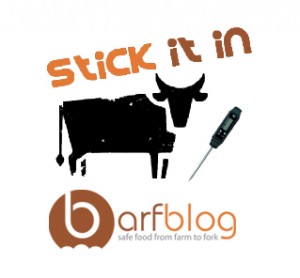In June 2012, the Oregon Health Authority and the Washington State Department of Health noted an increase in the number of Salmonella enterica serotype Heidelberg clinical isolates sharing an identical pulsed-field gel electrophoresis (PFGE) pattern. In 2004, this pattern had been  linked to chicken from Foster Farms by the Washington State Department of Health; preliminary 2012 interviews with infected persons also indicated exposure to Foster Farms chicken.
linked to chicken from Foster Farms by the Washington State Department of Health; preliminary 2012 interviews with infected persons also indicated exposure to Foster Farms chicken.
Margaret Grinnell et al. write in Morbidity and Mortality Weekly Report that on August 2, 2012, CDC’s PulseNet detected a cluster of 19 Salmonella Heidelberg clinical isolates matching the outbreak pattern. This report summarizes the investigation by CDC, state and local health departments, the U.S. Department of Agriculture’s Food Safety and Inspection Service (USDA-FSIS), and the Food and Drug Administration (FDA) and reinforces the importance of safe food handling to prevent illness. A total of 134 cases from 13 states were identified, including 33 patients who were hospitalized. This multifaceted investigation used standard epidemiologic and laboratory data along with patient shopper card purchase information, and PFGE data from the retail meat component of the National Antimicrobial Resistance Monitoring System (NARMS)†, a relatively novel tool in outbreak investigation, to link the outbreak strain to chicken from Foster Farms.
Epidemiologic data, traceback investigations, and product testing support the conclusion that Foster Farms chicken was the likely source of this outbreak. Shopper card records collected from patients provided specific brand information for chicken, a commonly consumed food product, and were critical to linking this outbreak to a single chicken producer. The NARMS retail meat surveillance program not only isolated the outbreak strain from Foster Farms retail chicken samples purchased in Oregon and Washington during the current outbreak, but also demonstrated that 98% of historic isolates matching the outbreak strain were from Foster Farms retail chicken samples. One limitation to these findings is that they might not reflect all establishments that produce Foster Farms chicken or all brands of chicken produced by each establishment.









.jpg) Except common sense isn’t common unless you’ve thought about it.
Except common sense isn’t common unless you’ve thought about it..jpg) were tested.
were tested.